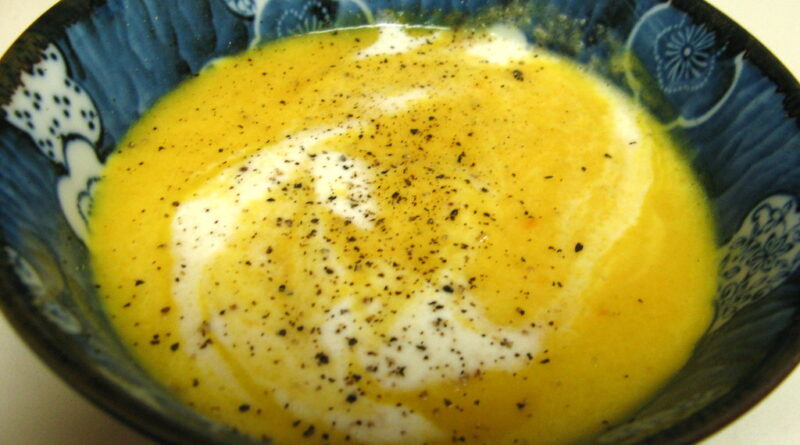Pepper soup
The Allure of Pepper Soup: A Dive into a Classic West African Dish
Introduction
Pepper soup is a beloved dish in many West African countries, known for its robust flavors, warming heat, and healing properties. It is a versatile dish that can be made with various types of meat, fish, or even vegetables, making it a staple in many households. This article explores the history, cultural significance, ingredients, preparation methods, and variations of pepper soup across West Africa.
Historical and Cultural Significance
Origins and Evolution
Pepper soup has deep roots in West African culinary traditions. Its origins can be traced back centuries to when traditional African societies used local ingredients to create nutritious and flavorful meals. The soup is often associated with comfort and hospitality, served at family gatherings, and celebrations, and as a therapeutic dish for those feeling under the weather.
Cultural Importance
In many West African cultures, pepper soup is more than just a meal; it is a symbol of unity and warmth. It is commonly served at social events, such as weddings, funerals, and community gatherings, symbolizing the host’s generosity and the community’s solidarity. The soup’s preparation and sharing are often communal activities, bringing people together and reinforcing social bonds.
Ingredients: A Symphony of Flavors
The Heat: Pepper Varieties
The defining characteristic of pepper soup is its spiciness, which comes from various types of peppers. The most commonly used peppers include:
- Scotch Bonnet: Known for its fiery heat and fruity undertones, Scotch bonnet peppers are a staple in many West African dishes, including pepper soup.
- Habanero: Like the Scotch bonnet, habanero peppers are another source of intense heat and flavor.
- African Bird’s Eye Chili (Piri Piri): These tiny but potent chilies add a sharp, lingering heat to the soup.
Aromatics and Spices
Pepper soup is also renowned for its aromatic and spice profile, which includes a blend of local herbs and spices. Common ingredients include:
- Ehuru (Calabash Nutmeg): Adds a unique nutty and slightly peppery flavor.
- Uziza Leaves and Seeds: Impart a slightly bitter and peppery taste.
- Uda Pods (Negro Pepper): Known for their earthy and smoky flavor.
- Cloves and Alligator Pepper: Enhance the aromatic quality of the soup.
Base Ingredients
The base of pepper soup typically consists of meat, fish, or a combination of both. Common choices include:
- Chicken: Often used for its mild flavor and quick cooking time.
- Goat Meat: Preferred for its rich, gamey flavor.
- Fish: Particularly catfish, which holds up well in the soup.
- Assorted Meats: Including tripe, liver, and other offals for added depth and texture.
Vegetables and Additional Ingredients
While traditional pepper soup recipes focus on protein and spices, some variations include vegetables like yam, plantains, or potatoes to make the dish heartier.
Preparation Methods: Crafting the Perfect Pepper Soup
Step-by-Step Guide
- Choosing and Preparing the Protein: Start by selecting your protein of choice. If using meat, cut it into bite-sized pieces and wash thoroughly. For fish, clean and cut into steaks.
- Blending the Spice Mix: In a blender, combine Scotch bonnet peppers, garlic, ginger, and onions. Add water and blend until smooth.
- Cooking the Protein: In a large pot, add the meat or fish, blended spice mix, and enough water to cover the ingredients. Bring to a boil, then reduce to a simmer.
- Adding Aromatics and Spices: Add your choice of aromatics and spices, such as calabash nutmeg, uziza seeds, uda pods, and cloves. Adjust the seasoning with salt and bouillon cubes if desired.
- Simmering: Allow the soup to simmer until the meat is tender and the flavors are well combined. This can take anywhere from 30 minutes to 2 hours, depending on the type of protein used.
- Finishing Touches: If adding vegetables like yam or plantains, do so in the last 20-30 minutes of cooking to prevent them from becoming too soft.
- Serving: Serve the pepper soup hot, garnished with fresh herbs or additional chopped peppers for an extra kick.
Tips for Perfect Pepper Soup
- Balance the Heat: Adjust the amount of pepper to your heat tolerance. You can always add more, but it’s hard to tone down an overly spicy soup.
- Use Fresh Ingredients: Fresh herbs and spices significantly enhance the flavor profile of the soup.
- Experiment with Proteins: Don’t be afraid to mix different types of meat and fish for a richer taste.
Variations Across West Africa
Nigerian Pepper Soup
Nigerian pepper soup is one of the most well-known versions of this dish. It often features goat meat or catfish and is spiced with a blend of uziza seeds, calabash nutmeg, and uda pods. Variations include yam pepper soup and plantain pepper soup, which add starchy vegetables for extra substance.
Ghanaian Pepper Soup
In Ghana, pepper soup, also known as “light soup,” is typically made with fish or chicken. It is characterized by its lighter, broth-like consistency and the inclusion of tomatoes and garden eggs (African eggplants) for a tangy and slightly sweet flavor.
Cameroonian Pepper Soup
Cameroonian pepper soup often incorporates assorted meats, including tripe and liver, and is spiced with a unique blend of njansang seeds, alligator pepper, and mbongo spice. The result is a deeply flavorful and aromatic soup.
Sierra Leonean Pepper Soup
Sierra Leonean pepper soup is similar to its Nigerian counterpart but often includes cassava leaves or potato leaves, adding a green, vegetal note to the dish. It is usually made with fish or chicken and is known for its rich, spicy broth.
Health Benefits of Pepper Soup
Nutritional Profile
Pepper soup is not only delicious but also packed with nutrients. It is high in protein, especially when made with meat or fish, and contains a variety of vitamins and minerals from the spices and herbs used. The peppers add a significant amount of vitamin C and other antioxidants.
Medicinal Properties
In many West African cultures, pepper soup is considered a remedy for colds and flu due to its spicy heat and warming properties. The capsaicin in the peppers helps clear nasal passages and soothe sore throats. Additionally, the soup’s rich broth provides hydration and essential nutrients, aiding in recovery.
Pepper Soup in Modern Cuisine
Contemporary Twists
In recent years, chefs and home cooks alike have begun experimenting with pepper soup, adding contemporary twists while preserving its traditional essence. Some popular modern variations include:
- Seafood Pepper Soup: Incorporating a variety of seafood such as shrimp, crab, and mussels for a luxurious take on the classic.
- Vegetarian Pepper Soup: Using hearty vegetables like mushrooms, eggplant, and tofu as substitutes for meat.
- Fusion Dishes: Combining pepper soup with other culinary traditions, such as serving it with rice noodles or adding coconut milk for a creamier texture.
Pepper Soup in Restaurants
Pepper soup has also found its way onto the menus of restaurants around the world, particularly in cities with large West African communities. It is often featured as a specialty dish, offering diners a taste of authentic West African cuisine.
Conclusion
Pepper soup is a quintessential West African dish that embodies the region’s rich culinary heritage. Its bold flavors, aromatic spices, and cultural significance make it a beloved dish across many countries. Whether enjoyed in its traditional form or with a modern twist, pepper soup continues to bring people together, offering comfort, warmth, and a taste of home. As more people discover and appreciate this flavorful dish, pepper soup is sure to remain a staple in kitchens around the world for generations to come.
Recipe: Classic Nigerian Goat Meat Pepper Soup
Ingredients
- 2 lbs goat meat, cut into bite-sized pieces
- 2-3 Scotch bonnet peppers, chopped
- 1 medium onion, chopped
- 2 cloves garlic, minced
- 1 inch ginger, grated
- 1 tsp ground calabash nutmeg
- 1 tsp uziza seeds (optional)
- 1 uda pod (negro pepper)
- 4 cups water
- Salt to taste
- 2 bouillon cubes (optional)
- Fresh herbs for garnish (e.g., parsley or cilantro)
Instructions
- Prepare the Meat: Wash the goat meat thoroughly and place it in a large pot.
- Blend the Spice Mix: In a blender, combine the Scotch bonnet peppers, onion, garlic, and ginger with a little water. Blend until smooth.
- Cook the Meat: Pour the blended spice mix over the goat meat in the pot. Add the ground calabash nutmeg, uziza seeds (if using), uda pod, and 4 cups of water. Season with salt and bouillon cubes if using.
- Simmer: Bring to a boil over high heat, then reduce to a simmer. Cook for about 1-1.5 hours, or until the goat meat is tender and the flavors have melded together.
- Adjust Seasoning: Taste the soup and adjust seasoning as needed. If you prefer a thicker consistency, let the soup simmer uncovered for a few more minutes to reduce slightly.
- Serve: Ladle the hot pepper soup into bowls, garnish with fresh herbs, and serve immediately.
Enjoy your pepper soup with a side of rice, yam, or simply on its own for a hearty and satisfying meal.



